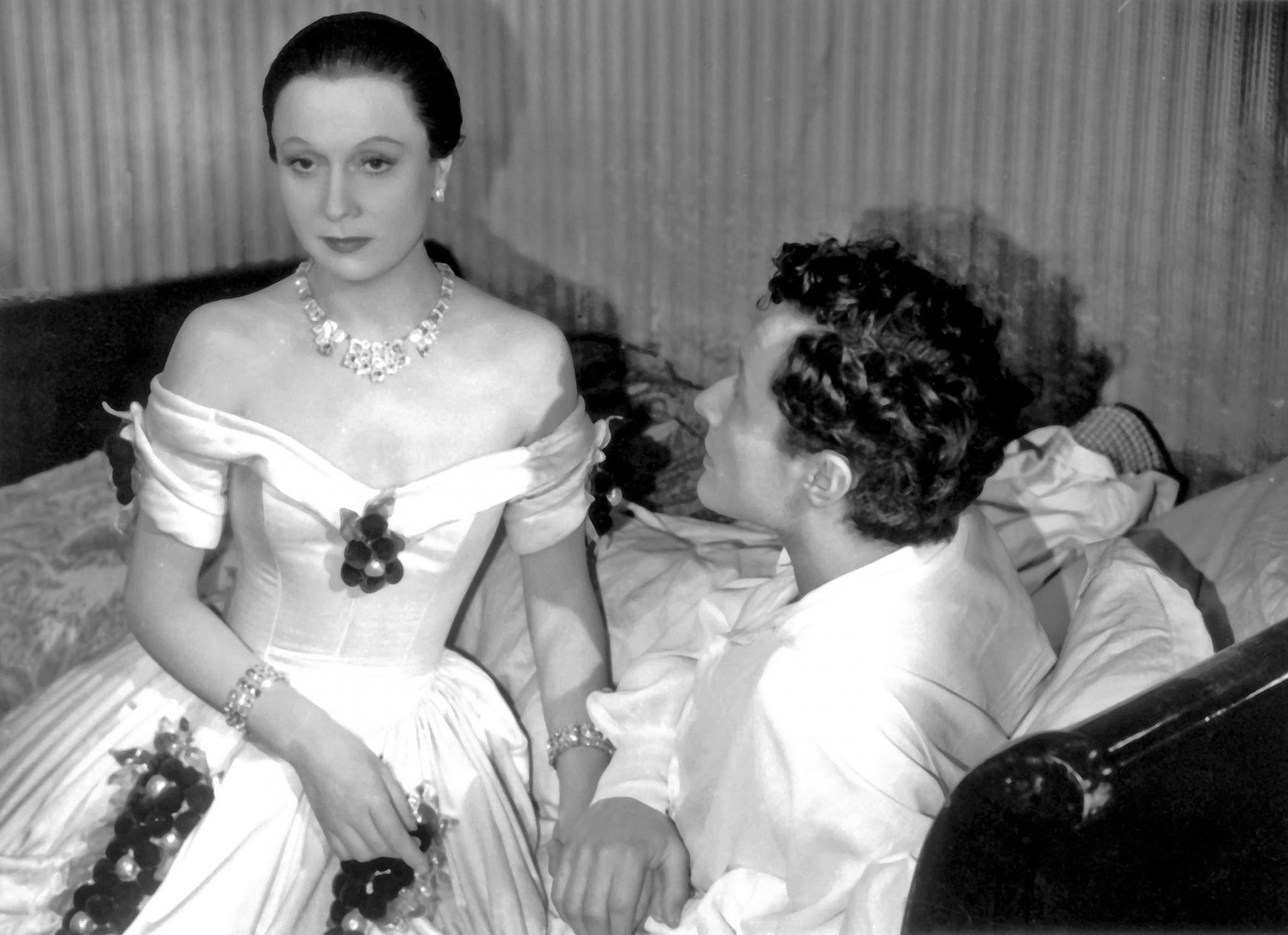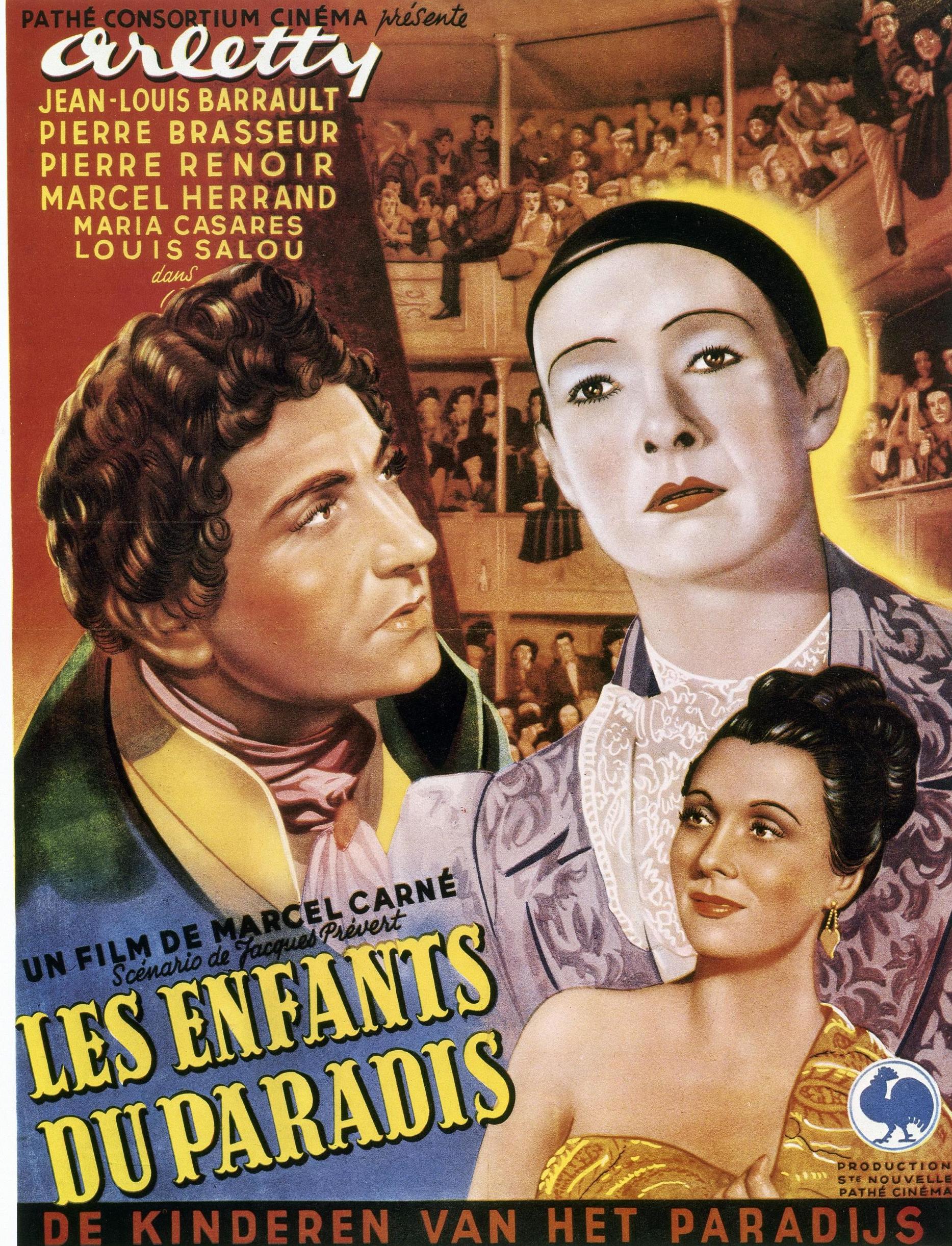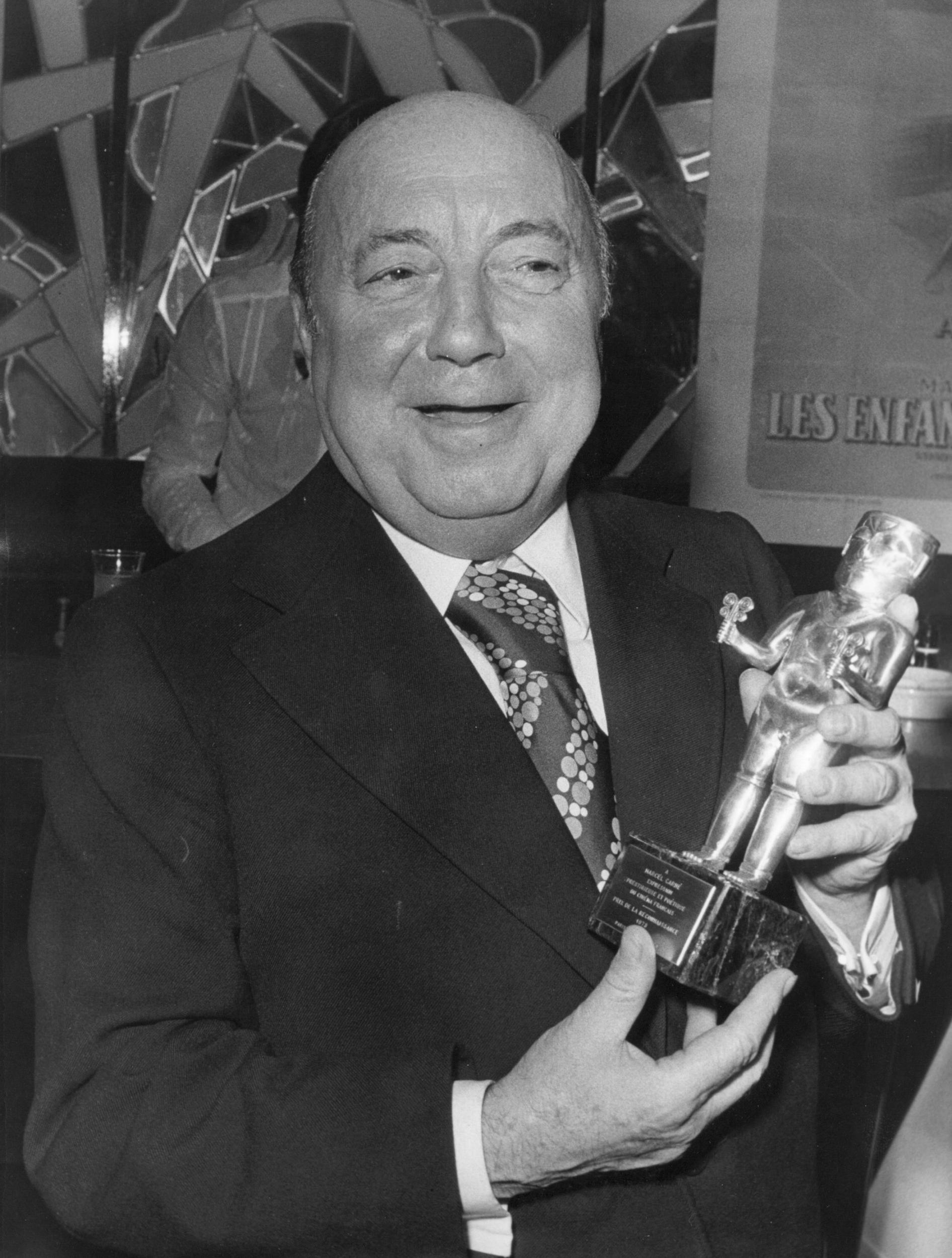‘There is a kind of magic’: Why Les Enfants du Paradis is one of the best films ever made
As the timeless romantic epic turns 75, Geoffrey Macnab looks back at the continuing spell of Marcel Carné’s masterpiece that was made under Nazi occupation

Why does everyone love this film?” This is a question the French director Marcel Carné asked himself late in his career in a BBC documentary discussing his masterpiece, Les Enfants du Paradis (1945). He wasn’t sure how to answer it. “Because it’s great? Because it is beautiful?” he pondered before admitting he really didn’t know. “There is a kind of magic … something that works,” was the best that he could come up with.
Les Enfants du Paradis, which celebrates its 75th anniversary this year, is a sprawling, carnivalesque, romantic epic with a very baggy storyline.
This is a period drama, set in 1820s and 1830s Paris and with a strong flavour of Balzac. As in the French author’s cycle of novels, The Human Comedy, the filmmakers venture into every corner of French society. They go high and low. Their characters include thieves, aristocrats, clowns, writers, and courtesans.
“Love is such a simple thing” is one of the most famous lines but there is nothing simple about the romantic conspiracies that unfold over the course of the three-hour film.
This is very different from the much leaner, more hardboiled films Carné and scriptwriter Jacques Prévert had made a few years earlier, such as Le Jour se Leve (1939), with rugged French star Jean Gabin as the killer locked in a highrise apartment, or Quai des Brumes (1938), with Gabin as an army deserter who falls in love with a young runaway. Carné and Prévert were seen as the arch-practitioners of poetic realism. In their movies, the lovers were always doomed but they would smoke plenty of cigarettes and strike romantic, mournful poses before they died.

Carné and Prévert had never before collaborated on anything of the scale of Les Enfants du Paradis. At the time, it was the most expensive film in French cinema history. It was made under the Nazi occupation but was released in early 1945, a few months after the liberation. The production, filmed first at the Victoriine Studios in Nice and then in Paris, took three turbulent and chaotic years to complete. Certain crew and cast members were either affiliated with the resistance or were Nazi collaborators. The celebrated production designer Alexandre Trauner and the composer Joseph Kosma were Jewish and had to work anonymously. Their highly unusual screen credit when the film was finally released, “Collaboration dans la Clandestine”, acknowledged they had been hired secretly.
The beautiful female lead Arletty, whose performance earned comparison with that of Vivien Leigh as Scarlett O’Hara in Gone with the Wind, was under arrest by the time the film finished shooting for the treasonous behaviour of having an affair with a young Luftwaffe officer, Hans Jurgen Soehring.
“They were seen eating lobsters and oysters together, quaffing champagne and attending the opera, as well as visiting Megeve, the ski resort in the Haute-Savoie favoured by Germans and wealthy collabos,” Anne Sebba writes of the lovers in her book, Les Parisiennes, How the Women of Paris lived, loved and died in the 1940s. “On one occasion, Soehring even introduced Arletty to Göring, on one of the latter’s famous shopping trips to Paris.”
Arletty was allowed to complete Les Enfants du Paradis but was then banned from acting for four years. “My heart is French but my ass is international,” was her very Gallic justification for the illicit relationship with a Nazi officer. At least she finished her work on the film. Robert Le Vigan, the actor originally hired to play the scavenging, gossiping, rat-like ragman Jericho, was an antisemitic Nazi sympathiser who suddenly disappeared during shooting. The assumption among his colleagues was that he wanted to get out of France before the Allies caught up with him. His scenes were re-shot with Pierre Renoir (son of the artist Pierre-Auguste Renoir and elder brother of the filmmaker Jean Renoir) in the role.
Years later, Carné remained strangely coy about his own reasons for staying in France during the war years and for working under the Germans’ noses in occupied Paris. As his biographer Edward Baron Turk notes, Carné clearly saw an opportunity to press his claims as the pre-eminent filmmaker of the time. “With [other directors] Clair, Feyder and Renoir in exile, conditions were favourable for solidifying his status as the most imposing creative force in French film.”
However, the director also regarded staying as an act of defiance against the Nazi invaders. “I helped prove that France had not lost in spirit what we had lost through arms. I am also grateful to have provided work for so many co-professionals in a time of severe need,” he loftily proclaimed of his wartime filmmaking.
As Turk observes, unlike his fellow directors who flourished abroad, Carné was not cut out for exile. He was “thoroughly monolingual” and “fiercely Gallocentric”. If he had gone to Hollywood, he wouldn’t have fitted in.
The idea for Les Enfants du Paradis was hatched in the south of France. It is fitting that the actor Jean-Louis Barrault, who gives an astonishing performance in the film as the mime-artist hero, inspired the film. In 1942, Barrault had an encounter with Carné and Prévert on the terrace of a Nice hotel. He told the director and writer of his obsession with the legendary, real-life 19th century mime artist, Jean-Gaspard Deburau, known as Baptiste. Deburau had killed a man who harassed him in the street and his murder trial had turned into a public event. Everyone was fascinated to hear the great mime artist defend himself. They had seen him perform countless times but this would be the first occasion he had ever spoken in public.
Barrault’s character in the film, also called Baptiste, was directly based on Deburau. He is one of four male protagonists besotted with the beautiful model and courtesan, Garance (Arletty). Baptiste falls in love with her the moment he sees her wrongly accused of stealing a watch and he performs a skit to show the police what really happened.
Ethereal, pale, generally seen in long, flowing clothes, Baptiste as played by Barrault is gentle and hypersensitive. His mime artistry is more graceful than that of, say, Marcel Marceau. He is not clowning but expressing his innermost feelings through movement. His love for Garance is so all-consuming that it affects every part of his being.
By complete contrast, the ambitious young actor Frédérick Lemaître (Pierre Brasseur), also based on a real character, is loud, impulsive and full of braggadocio. At the start of the film, when he sees Garance walking down the Boulevard du Crime (the packed section of the city where actors, swells and low-lives congregate), he straightaway accosts her. The fact he is penniless and unknown doesn’t hold him back as he tries to seduce her.
The third of Garance’s suitors, also based on a real-life archetype, is the poet and criminal Lacenaire (Marcel Herrand), a sleekly cynical figure described as “thief by need, murderer by calling”. He pays Garance the supreme compliment: “You are the only woman for whom I have no contempt.”
The three men are competing for Garance with an aristocrat, Count de Montray (Louis Salou), who has the money and social status they lack.
Given wartime conditions, you might expect a film steeped in austerity and introspection. Instead, what is most startling about Les Enfants du Paradis is the wild exuberance. Carné recruited thousands of extras. The street scenes are crammed with onlookers, pedestrians and hustlers. The sets for the Boulevard du Crime reportedly took three months and “67,500 man-hours” to build.

Backstage in the Funambules theatre, the centre of the action, it is sheer pandemonium too. Jugglers, acrobats, dwarves, members of the chorus and actors all mill around, getting in each others’ way and sometimes becoming involved in mass brawls.
“I want to act,” Brasseur’s character Lemaître announces when he first arrives at the Funambules.
“You’ve got the wrong theatre,” the manager says as he shoos him away.
The film is witty and satirical as well as heart-tugging. When Lemaître is performing in some ridiculous Grand Guignol melodrama in which a character has just been murdered, he will suddenly step out of his role and gesture at the playwrights: “the true authors of the crime are there”.
Brasseur gives a magnificent performance as the roaring, womanising, wildly generous but always cash-strapped actor who still finds himself pursued by angry creditors and jealous husbands even after he becomes successful.
The mind boggles that a film on this grandiose scale could have been made in the middle of wartime. Carné had barely started shooting in Nice when, as Turk writes, “the invasion of Sicily by American troops ... so alarmed the German occupiers that they ordered cast, crew and equipment back to Paris immediately.”
Even more startling was Carné’s own dithering. He realised that the Allies were going to win the war and wanted to ensure the film had its premiere after liberation. As he later confessed, “I had but one wish: to make the finishing touches last as long as possible in order that the film be released as the first under our finally regained peace.”
Generally, when productions are as beset with logistical problems as this one was, they turn out to be disasters. It’s a testament to Carné’s strength of personality that he held the project together when it teetered so often on the verge of collapse.
The film has similarities to the Charles Dickens adaptations (Great Expectations and Oliver Twist) that director David Lean was making at around the same time. This is shown in its carnivalesque energy, its depiction of Bill Sikes-like thugs, of dandies in top hats and of women in bonnets, of harassed theatre managers and ragged beggars. The main difference is that Carné deals far more frankly with love and sex.
When you know the backstory, it is difficult not to look at Les Enfants du Paradis through the prism of the Nazi occupation and to wonder what sacrifices and sordid moral compromises were needed in order to complete it. However, if it is an allegory, it’s a hard one to untangle. Most viewers are so enraptured by the film’s lyricism and romanticism that they don’t want to ask awkward questions about the circumstances in which Carné and Prévert conceived it.

In his 2016 documentary A Journey Through French Cinema, director Bertrand Tavernier speculated about the ways in which Carné and Prévert helped each other. Carné, Tavernier thought, was “a loner, someone who had trouble dealing with amicable, humanist feelings” but Prévert brought him “generosity in his view of characters ... tenderness”.
Les Enfants du Paradis underlines Tavernier’s point. It shows its characters behaving in selfish, cowardly, and often despicable fashion. They’re cheats, thieves and spendthrifts. Garance, the beautiful “flower” has no compunctions about running away with the rich Duke but is still framed in close up as if she is the Virgin Mary. The other characters too are portrayed with such affection that they seem almost angelic. Prévert’s “tenderness” transforms what could have been a sour and misanthropic story about lost illusions into a beguiling romantic fable. It helps that cinematographer Roger Hubert films the Paris streets with a romanticism that recalls the photography of Brassaï.
Carné carried on working for over 30 years without making any other film that came even close to matching Les Enfants du Paradis. As French cinema historian Georges Sadoul wrote, the film was “an end rather than a beginning”. It “exercised no special influence ... and remained a splendid, isolated monument”. Carné was right to suggest there was “some kind of magic” in it but that magic proved impossible to recapture.
‘Les Enfants du Paradis’ is available to stream on Amazon Prime Video
Join our commenting forum
Join thought-provoking conversations, follow other Independent readers and see their replies
Comments